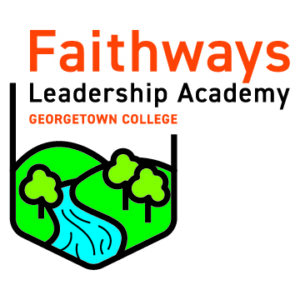Security Council Overview
MS & HS | Grades 7 - 8, 10 - 12
1 or 2* Security Council team(s) per school, 1-3 students per team
*Two teams are only available if space permits. Y-Staff will reach out to schools if space is available. Schools must guarantee they will be able to have 4-6 Security Council representatives if they want to have a second team.
MS Security Council
There is a maximum of fifteen teams (countries) on the MS level of the Security Council. Each team (country) will be a voting member. Countries are reserved on a first-come first-served basis.
HS Security Council
There is a maximum of twenty teams (countries) on the HS level of the Security Council. Fifteen teams (countries) will be voting members. Five teams (countries) will be non-voting members. Countries are reserved on a first-come first-served basis.
Program Area Coordinator
Emilee McCubbins
emilee@kyymca.org
The United Nations Security Council is one of the principal organs of the United Nations and is charged with the maintenance of international peace and security. At KUNA, the Security Council will address three Issues in a specialized debate format.
At the Assembly, members of the Security Council work together to draft and vote on Resolutions addressing each issue. Our Security Council will also participate in a Crisis Scenario, which will be facilitated by the President of the Security Council President and YMCA Staff. Details regarding the scenario will be revealed at KUNA.
Delegate Roles
Security Council Member (Max 6 per School)
Each School can have 1 or 2 Security Council teams with up to three members.
Pre-Conference Requirements for Members
- Read the Security Council Issue Agenda (coming Fall 2025).
- Review all the following documents to prepare for the Security Council Debate Format:
- Resource Folder
- Resolution Guide - Security Council Specific
- Debate Procedure – This is how debate will flow during Security Council sessions.
- Chart of Motions – This document describes the various motions Security Council members may make during debate.
- Submit your Position Papers. Here is a Position Paper Example and Position Summary Example provided by your Security Council Presidents.
Note: Position Papers require at least three single-spaced pages of well-researched writing. Students are advised to begin working on their papers well in advance of the deadline. Teams who do not submit papers by the deadline or whose papers do not meet minimum quality standards will not be eligible for Security Council awards. - After the position paper submission deadline, read all of your conference’s position papers (which will be emailed to you) and fill out the Diplomatic Relationships Chart (template located in the Resource Folder). Bring it with you to the conference.
Supporting Officers
Director of Security Council Affairs
Application-based position.
- Manages the Speaker’s List
- Works directly with President of Security Council to ensure the running of the council is smooth.
Presiding Officers
Delegations must intent and register for the conference of which their Presiding Officer is elected/appointed.
President of the Security Council
Chosen from the members of the Security Council
- The Security Council is facilitated by the President of the Security Council
- High School Security Council Presidents will work together to design the Crisis Scenario that will be used at each of their Assemblies.
- Only 7th (MS) / 11th graders (HS) are eligible to be chosen as President. Students who wish to be considered should complete a Presiding Officer Commitment Form.
- Only eligible to Student Y Members.
- The Security Council President will be appointed among the members of the Council by the sitting President. The President will choose a member who demonstrates respect for fellow members, well-researched debate, and a strong grasp on debate procedure and the chart of motions.
Assembly Agenda
Program Area Meeting | Day 1
- All members of the Security Council will meet three times on Day 1 of conference.
-
- Introductory Meeting: President will provide a procedural overview and go over debate structure. One copy of each debate resource (Issue Agenda, Chart of Motions, Debate Procedure, Resolution Form, and Amendment Form) will be given to each country.
- Setting the Agenda, First Round of Debate: Agenda will be set referencing issues present on the annual Security Council Issue Agenda. Debate begins.
- End of Day 1 Debate: Overview of Day 2 schedule and structure.
Security Council Debate | Day 2
- For Security Council, the majority of Day 2 consists of debate and the candidate/election process.
- Debate: All members of the Security Council will meet together on Day 2 for four rounds of debate from 8:30AM through 5:00PM. Breaks in between sessions.
- Candidate Speeches and Elections: All Security Council members will meet for the final time on Night 2 to listen to candidate speeches and vote on their top pick before dismissing the Council for that conference.
- The Crisis Scenario will happen during debate on Day 2 at an unspecified time.





